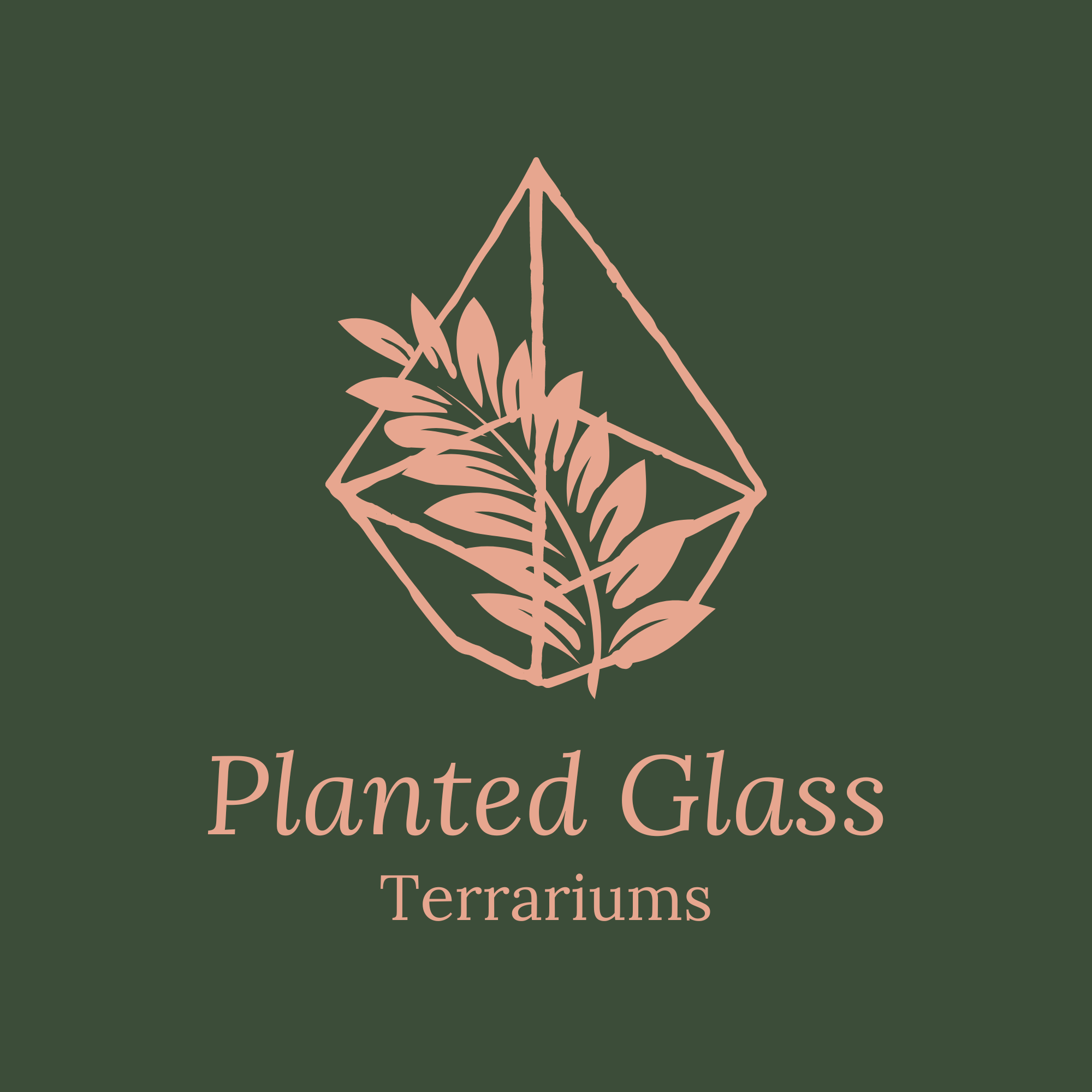Layers are the foundation of your terrarium, providing everything from drainage to nutrients. Getting the materials and quantities right sets you up for a successful and long-lived terrarium.
In this article, I'll talk you through the basic layers you need to set up inside your terrarium. I'll list recommend the best materials and also provide alternatives you can use if you can't find a certain material in your area.
A closed terrarium includes five layers that each serve unique functions. Every material you put inside the jar stays there forever- there's nowhere else for it to go! That's why getting the layers right is so important.


1) Drainage layer (rocks):
Working from the bottom up, the first is your drainage layer, which provides a place for water to drain off in case you accidentally overwater your terrarium. It also provides a place for beneficial bacteria to build up over time. I prefer to use rocks for this layer but sand or gravel work too.

2) Carbon fibre mesh:
Next, I add a piece of carbon fibre mesh cut to the size of the jar. Without this divider, the rest of the layers would blend into the rocks, destroying the whole purpose of the drainage layer. Although carbonfibre mesh sounds fancy, it's just the window screen replacement you can buy at your home repair store. Garden netting or coffee filters work too but degrade over time.

3) Horticultural charcoal:
Once your mesh is in place, sprinkle some horticultural charcoal over it. Charcoal helps to prevent mold and root rot, filters the water as it cycles through the system, and absorbs excess water. Horticultural charcoal sold at garden stores is best but you could use something like BBQ charcoal as long as it's chemical free and broken into small pieces.

4) Quality terrarium soil:
Invest in a high quality terrarium or bonsai soil for your project. These soil mixes are made with ingredients that work well in a closed, humid environment. While they work in a pinch, I would not recommend using common potting soils, since they compact too easily, don't drain well, and often contain ingredients that are prone to mold in closed terrariums.

5) Plants and decorations:
The final layer in your terrarium is your plants and decorations. Research the best terrarium plants and choose a species suited to the size of your container. When in doubt, experiment and see what plants work!

To spruce up your terrarium, add some decorative rocks, crystals, driftwood or cute miniatures. Just make sure whatever you add is waterproof and won't break down or rot when exposed to moisture.
Cheapest option:
If you have a small budget but still want to make a great terrarium, prioritize the drainage layer and quality terrarium soil. You can forgo the mesh and charcoal. Upcycle an old mason jar or plastic container for your terrarium.
Finally, check out the concept of "native terrariums," which refers to terrariums you make from materials foraged from the forest in your area. Ben from Worcester Terrariums has a great native terrarium tutorial video.

